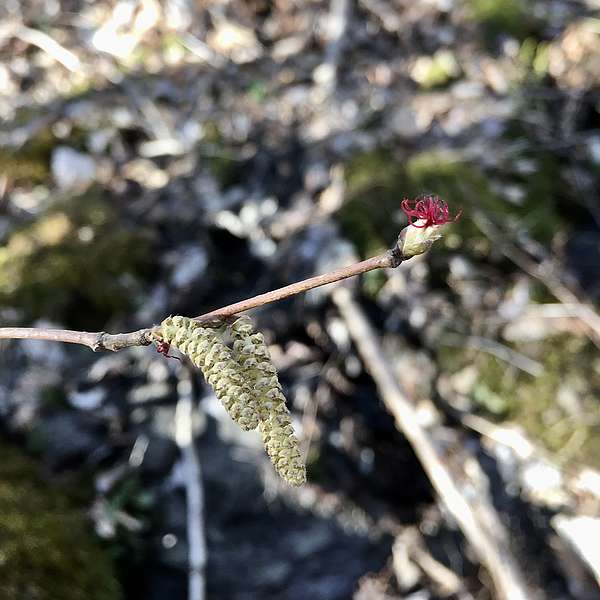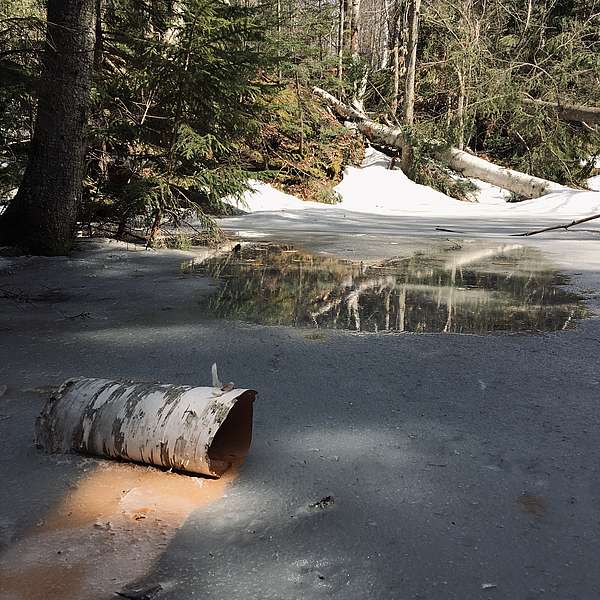And just like that, April has slipped into memory behind a symphony of frog song, flowers, and ever-warming rains. Birds are once again gathering nesting materials, black bear mamas and their tumbling cubs are out foraging, and each passing day seems to showcase new green sprouting from drying ground. The bursting of buds upon the hardwood trees is no longer wishful thinking, as color touches the landscape once again, brightening the brown and gray of the low hills in a way not seen since the last breath of autumn faded from view.
Finally able to venture forth from home, this last week I became acquainted with springtime on several SLT properties. Quiet forest walks were punctuated by Hermit Thrush song and the drum of Yellow-bellied Sapsuckers in Wiessner Woods, while up in elevation, Page Forest’s thick winter snowpack was melting into glistening pools and muddy soils, the only green to be found on the forest floor that of bryophytes and clubmoss.
While Vermont may not have the most extreme topographic relief, it certainly has enough to allow a person to chase the arrival of spring for several months by simply climbing upwards -- the highest elevations still have quite a way to go before they are anywhere near snow free and flowering, let alone dry enough for mindful trail travel. In addition to elevation, the microclimates found in cool valleys or warm, south-facing slopes heighten phenological diversity even more.
As spring's diversity progresses, so do the myriad of ways in which you can participate in learning about and tracking what you’re seeing outside of your own doors. Webinars offered through other local organizations remain plentiful, and there are several noteworthy, iNaturalist based citizen science projects with which to become involved: check out this Socially Distant BioBlitz hosted by a number of regional organizations, as well as the Vermont Center for Ecostudies' projects including a Backyard Bird Quest and continuing Wildflower Annotation Blitz.
Stay connected, and stay curious!

